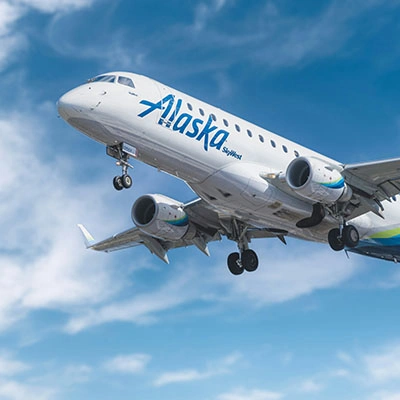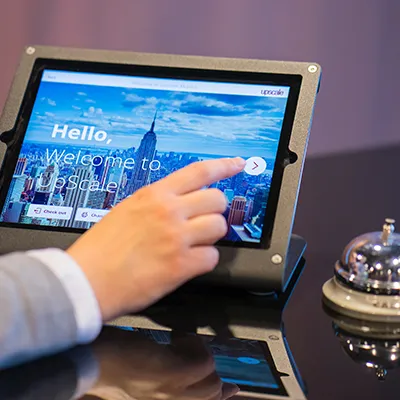We all love travel hacks that save us money and time. Luckily, there are three important types of services or “memberships” you can take advantage of to make travel more economical and convenient: annual plans, loyalty programs, and subscription services.
But are each of these really that different? How do travel subscriptions work compared to annual plans? Are any of them worth the money? To answer these questions, and to make sure you’re getting the most out of your travel dollars, Seven Corners created the ultimate guide to these travel plans and programs.
What Is an Annual Travel Plan?
How does an annual travel plan work? You make a single purchase and then use that service or product for the year without additional charges. There’s no monthly fee like you’ll see below for subscription services.
One of the most common examples of a yearly plan in the travel industry is annual travel insurance. You’ll see annual plans in other industries, too, though. For example, some spas allow you to purchase a year’s worth of services upfront so you can enjoy a regular massage or facial without reaching for your wallet each time.
Examples of annual plans
Seven Corners offers an annual plan that's perfect for frequent travelers who make several trips throughout the year or who are looking for long-term travel insurance.
Seven Corners Trip Protection Annual Multi-Trip helps protect the money you invest in your travels as well as your health. The purchase of a single plan covers each of your trips during the course of the year. It offers benefits such as trip cancellation and trip interruption so that you can be reimbursed for trip expenses if you have to cancel or interrupt your trip for a covered reason. You’ll also find coverage for personal belongings and medical expenses, including pre-existing conditions.
Our annual trip protection coverage can cover you during both domestic trips within the U.S. and internationally. This is a great choice if you travel to see family frequently, take frequent business trips, or simply see no reason to save your vacation time. (We don’t blame you; you deserve your PTO.)
You’ll find annual travel plans outside of insurance, too. U.S. travelers will likely recognize AAA as an annual service. The once-yearly charge gets you roadside assistance, travel and vacation planning services, as well as discounts on hotels, theme parks, car rentals, and more. If you’ve ever run out of gas or needed a jumpstart on your car, you know how helpful AAA’s annual plans can be.
If you’re traveling in London, you can purchase an annual Travelcard. A Travelcard gives you unlimited travel on buses, the Tube, London Overground, and more, and can be purchased for a single day, weekly, monthly, and of course, annually. The benefit of buying a one-year Travelcard is its lower cost. According to their website, compared to 7 Day Travelcards, the annual option reduces the price of a ride by 23%.
As you can see, while you might be less familiar with annual travel insurance, there are plenty of year-long plans available for adventurers.
Are annual plans worth it?
Annual plans can provide great levels of convenience and savings. Take the Seven Corners Trip Protection Annual Multi-Trip plan, for example. There's only one round of researching travel insurance, one purchase, one plan document to familiarize yourself with. We know buying travel insurance isn’t the most exciting part of your vacation, so if you can simplify the process of finding the best travel insurance for you, why wouldn’t you take advantage?
That being said, annual plans, whether it’s for travel insurance or a bus pass, are only worth the cost if you plan to use them for the entire year. As much as I would love to spend the year in London (I live in Indiana, USA), it wouldn’t make sense for me to purchase an annual pass. The 7 Day Travelcard, although technically more expensive per use than the annual option, is still more economical if I’ll only use one week’s worth of rides.
What Are Travel Loyalty Programs?
Travel loyalty programs award you points every time you spend money with a particular business, whether that’s a hotel, airline, or rental car agency.
So how do travel loyalty programs work? Once you accumulate enough points — or miles or stars or whatever the company uses — you earn additional perks. This could be a so-called free night with that hotel or a seat upgrade on your next flight, for example.
Most of us are more familiar with supermarket loyalty programs. My local store gives me a point for every dollar I spend on groceries, which I can then redeem for money off at their gas stations. I don’t pay an additional fee to be a part of the loyalty program. I simply provide the store with some personal information and scan my card at the checkout each time I shop.
Examples of travel loyalty programs
Frequent flyers and coffee lovers rejoiced when Delta and Starbucks announced in Fall 2022 that you can link their rewards programs. Once you link your accounts, you earn SkyMiles with your coffee purchase and Stars when you purchase tickets from Delta. There are also additional perks if you buy your Starbucks pick-me-up on a day that you also fly with Delta.
Lots of hotels offer loyalty programs allowing you to earn points for each dollar you spend at one of their properties. The Raddison Rewards program even has three tiers — Club, Premium, and VIP — so as you earn more points, you also earn more elite status and, therefore, more perks. You can use your points to pay for a future stay as well as put them toward purchases with their airline partners or even donate to charitable causes.
Are loyalty programs worth it?
It’s important to be conscious of your spending habits when you join a loyalty program. If you’re a frequent flyer who tends to travel with the same airline every time, or if you always stay at the same hotel, it would be smart to take advantage of these programs. Chris Elliott has a nice list of who should — and who should not — collect miles and points.
The potential trap is that when people are a member of a loyalty program, they often spend more than if they weren’t trying to earn points. Many of us are excited by the thrill of collecting points, so we end up spending more than we normally would just to get the upgrade.
The question to ask yourself is “If I weren’t a member of the loyalty program, would I still have spent that money?” Too often, the money we spend to get more points is more than we ultimately save. Remember, your points aren’t actually free. You just paid for them when you made a purchase on something else.
What Are Travel Subscription Services?
When you purchase a travel subscription, you pay a monthly or annual fee for access to a service from a travel company. These are usually premium or luxury services and can include things like vacation rentals or upscale hotels, private charter flights, and some credit cards.
Think of travel subscriptions like an Amazon Prime membership. Each month, you pay a flat rate in exchange for free shipping, movies, and select other Amazon services. You pay that rate regardless of if or how much you buy and regardless of whether you watched any movies this month.
Examples of travel subscription services

This helps you avoid being burned by price fluctuations. For example, even if the cost of your ticket shot up by a couple hundred dollars from one day to the next, you still pay the same rate based on your subscription.
Some travel credit cards are subscription services. If you pay an annual fee, you’ll usually get bigger rewards than a card without a fee. Depending on the credit card company, these rewards could be airline miles, priority boarding or free checked bags for flights, airport lounge access, free nights at a hotel, or no foreign transaction fees.
TSA PreCheck is another subscription service for travelers, although you might not initially think of it that way. When you pay the fee with your application, you receive special benefits for five years. Your membership allows you to skip the long security lines at the airport. You also don’t have to remove liquids from your carry-on bags or take off your shoes at security. For frequent flyers or those with young children, simplifying this process is often worth the fee.
Are travel subscription plans worth it?
Whether travel subscriptions are worth the money depends on how much you use them. Like our Amazon Prime example above, if you don’t purchase anything for a month, and therefore don’t need free shipping, then it can feel like a waste of money. However, if you do all your Christmas shopping on Amazon and get a delivery every day, you’ll likely come out ahead financially.
The same goes for travel subscription services. The more you use your subscription, the more cost-effective it is. Eligible flights on Flight Pass includes Alaska Airline flights only within California, Nevada, Arizona, and Utah. So, if you pay the monthly fee but then find you only fly to Chicago, then the answer to whether it’s worth the cost is probably no. However, travelers who fly between Los Angeles and Phoenix frequently could easily come out ahead.
The important thing is to not only carefully examine the services you’re paying for, but also to be honest with yourself about your spending habits. If you don’t travel on the West Coast often, Flight Pass might not be for you. On the other hand, if a travel credit card gives extra cash back on purchases made at supermarkets and you buy groceries for a family of six, then the card’s annual fee could be justified by the payoff.
It’s especially important to be careful with travel credit cards. To make the rewards worth it, you should be paying off your balance in full each month. Otherwise, you’re paying more in interest — 16% or more perhaps — than you’ll ever make in rewards, which is often closer to 3%.
Wander with Long-term Travel Insurance.
Earlier we mentioned our annual multi-trip plans. With these plans, you get:
- Long-term travel insurance
- Coverage for trip cancellation, trip interruption, and trip delay
- Coverage for COVID expenses and other illnesses or injuries that occur when you travel
- Emergency medical evacuation benefits
- 24/7 emergency travel assistance services
If you’re ready to protect your year’s worth of adventures, get a quick quote online. But if you still need more details, we can help with that, too. Talk to one of our licensed travel insurance agents to get all your questions answered before you travel.
Travel Like a Pro with The Wayfinder
Did you enjoy this blog? Get more articles like it before anyone else when you subscribe to our monthly newsletter, The Wayfinder.
Sign me up

